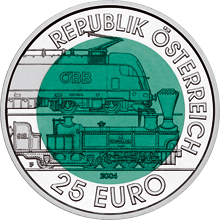This article needs to be updated. (December 2012) |


Euro gold and silver commemorative coins are special euro coins minted and issued by member states of the Eurozone. They are minted mainly in gold and silver, although other precious metals are also used on rare occasions. Austria was one of the first twelve countries in the Eurozone to introduce the euro (€), on 1 January 2002. Since then, the Austrian Mint has been minting both normal issues of Austrian euro coins (which are intended for circulation) and commemorative euro coins in gold and silver.
These commemorative coins are legal tender only in Austria, unlike the normal issues of the Austrian euro coins, which are legal tender in every country of the Eurozone. This means that the commemorative coins made of gold and silver cannot be used as money in other countries. Furthermore, as their bullion value generally exceeds their face value,[1] these coins are not intended to be used as means of payment at all—although this remains possible where they are also legal tender. For this reason, they are usually named Collectors' coins.
Such coins usually commemorate the anniversaries of historical events. They can also draw attention to current events of special importance. Austria mints more than ten of these coins on average per year, in gold, silver and niobium, with face values ranging from €1.50 to €100 (though, as an exceptional case, 15 coins with face value €100,000 were minted in 2004).
- ^ Precious metals in bulk form are known as bullion, and are traded on commodity markets. Bullion metals may be cast into ingots, or minted into coins. The defining attribute of bullion is that it is valued by its mass and purity rather than by its face value as money.